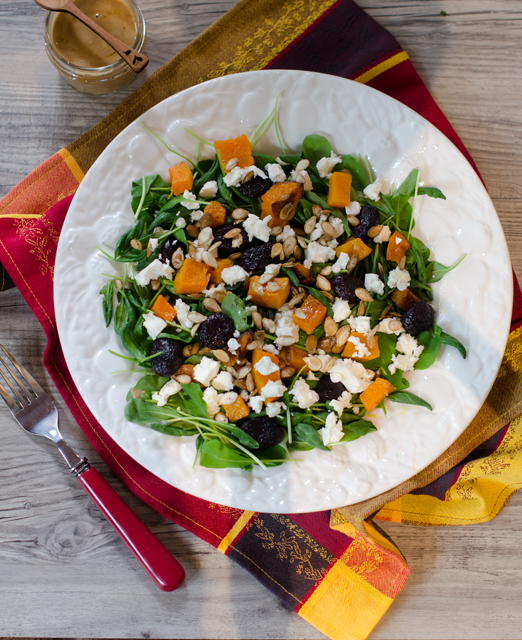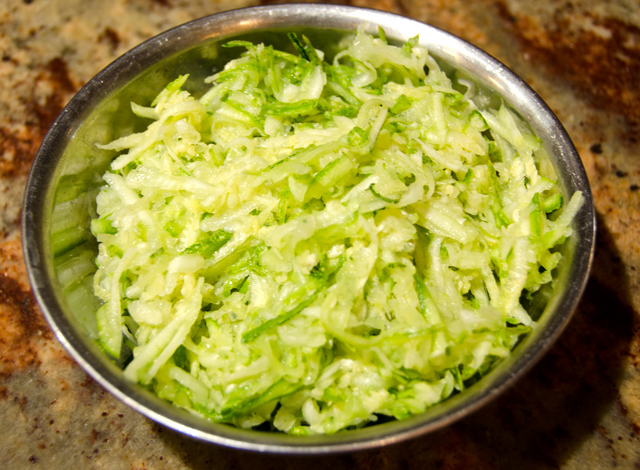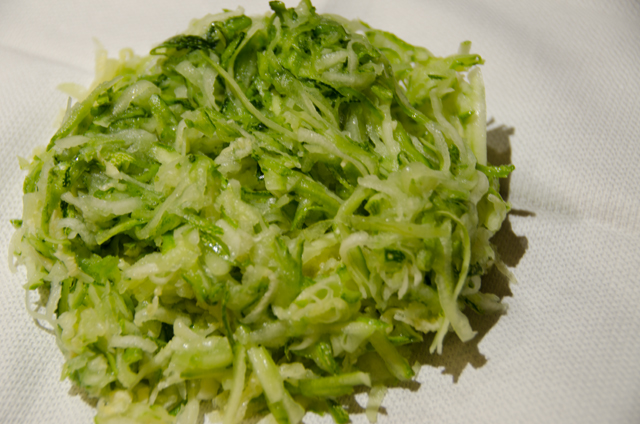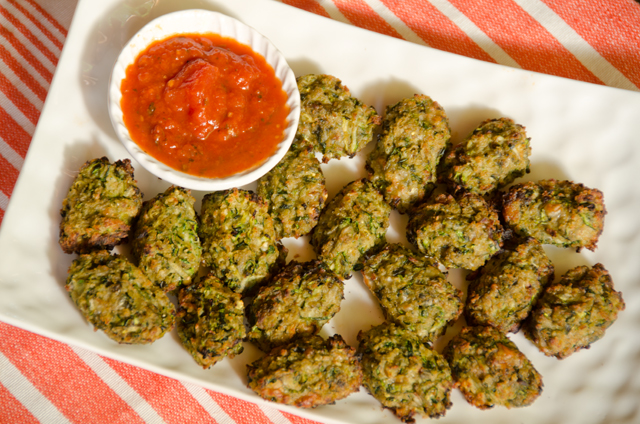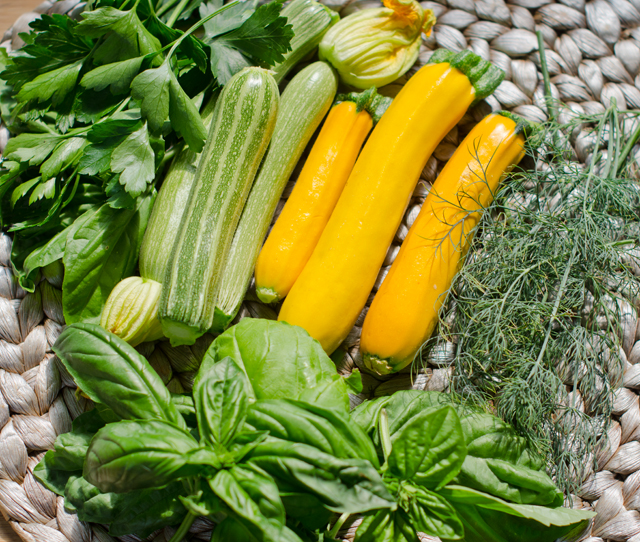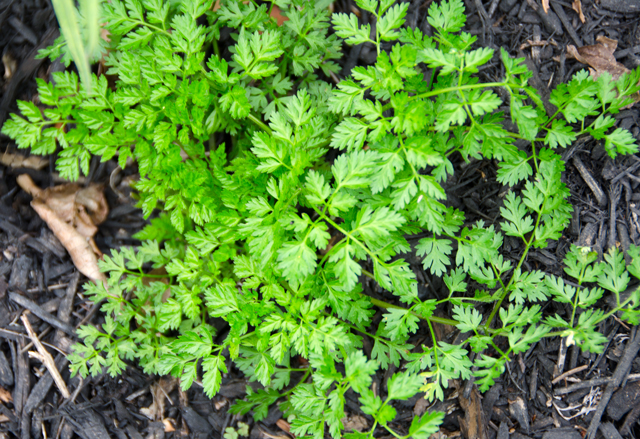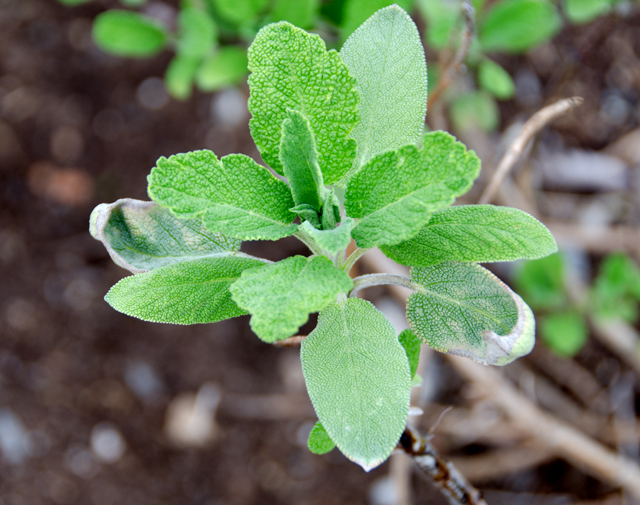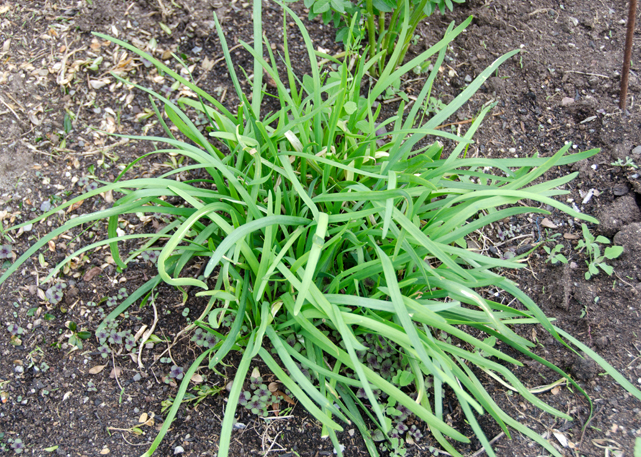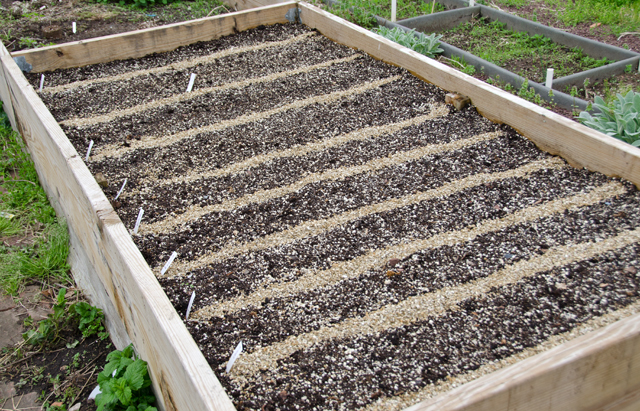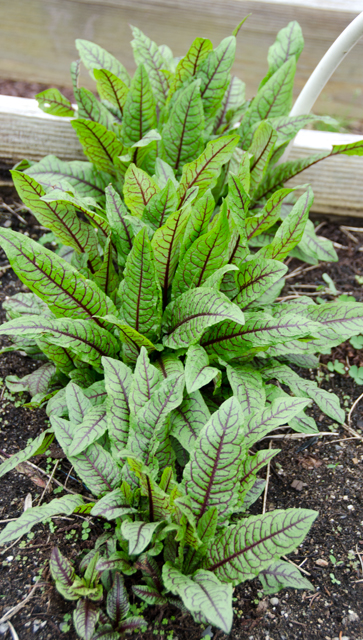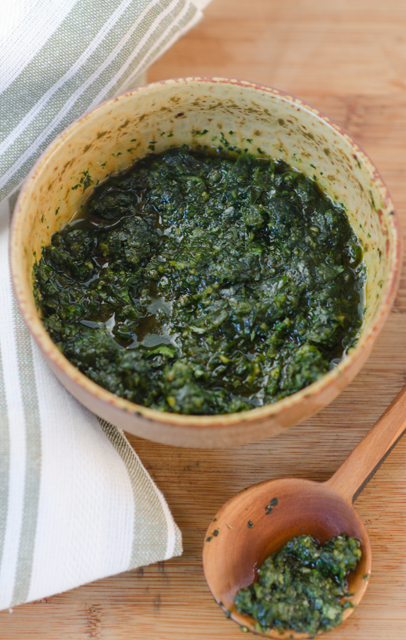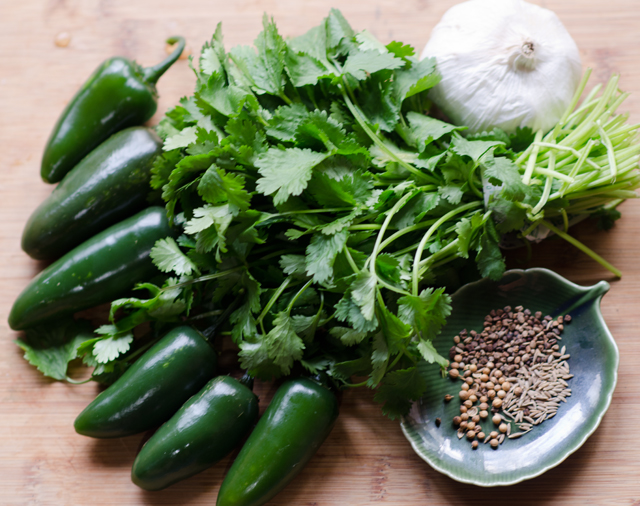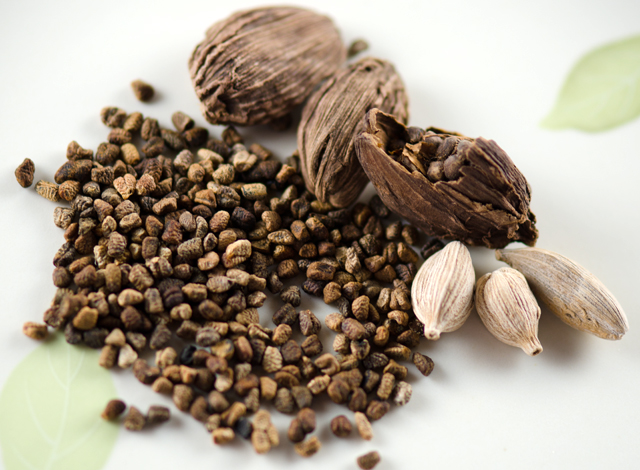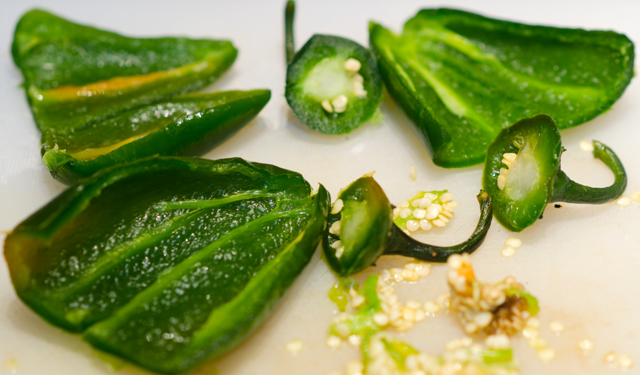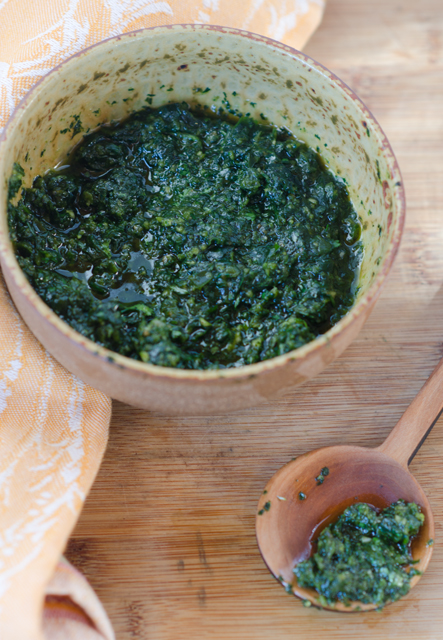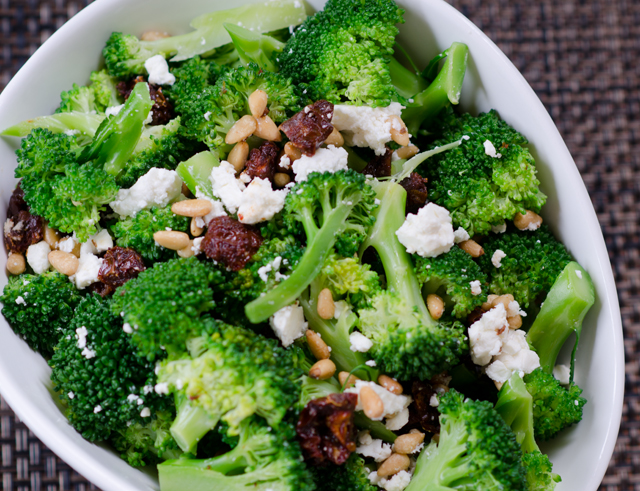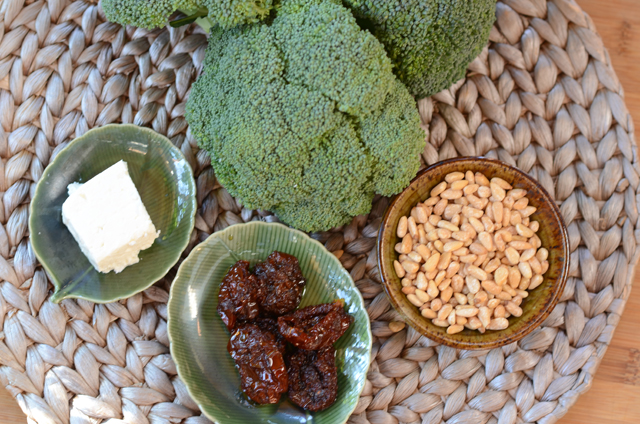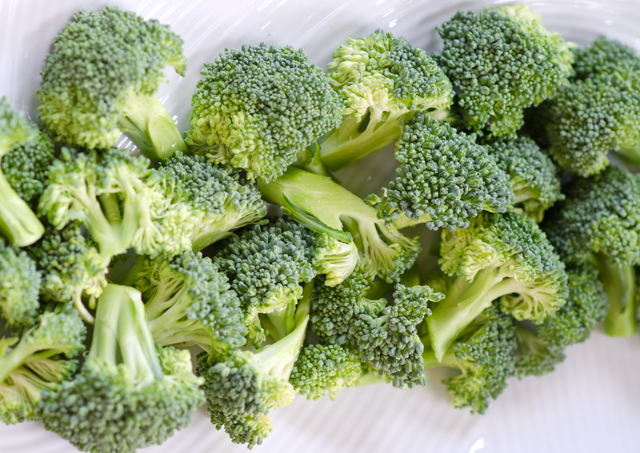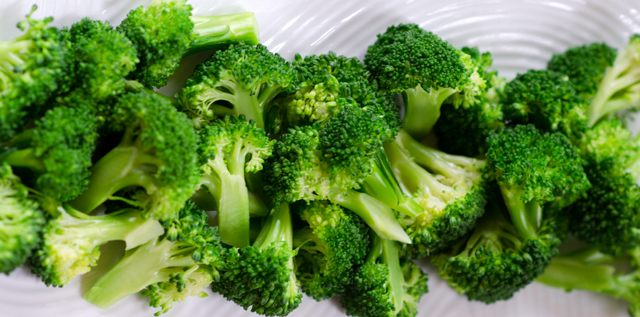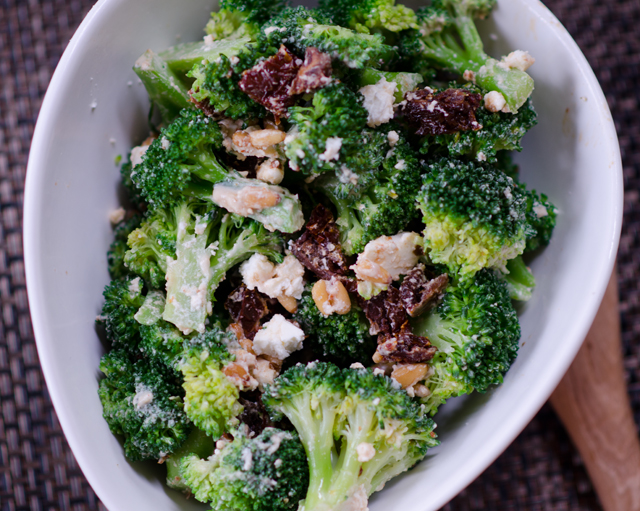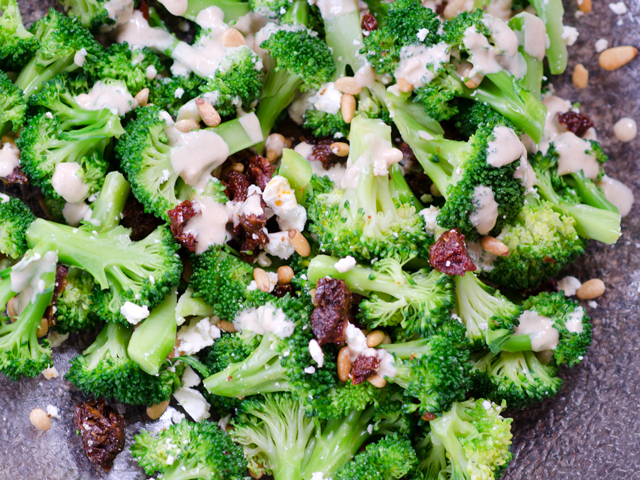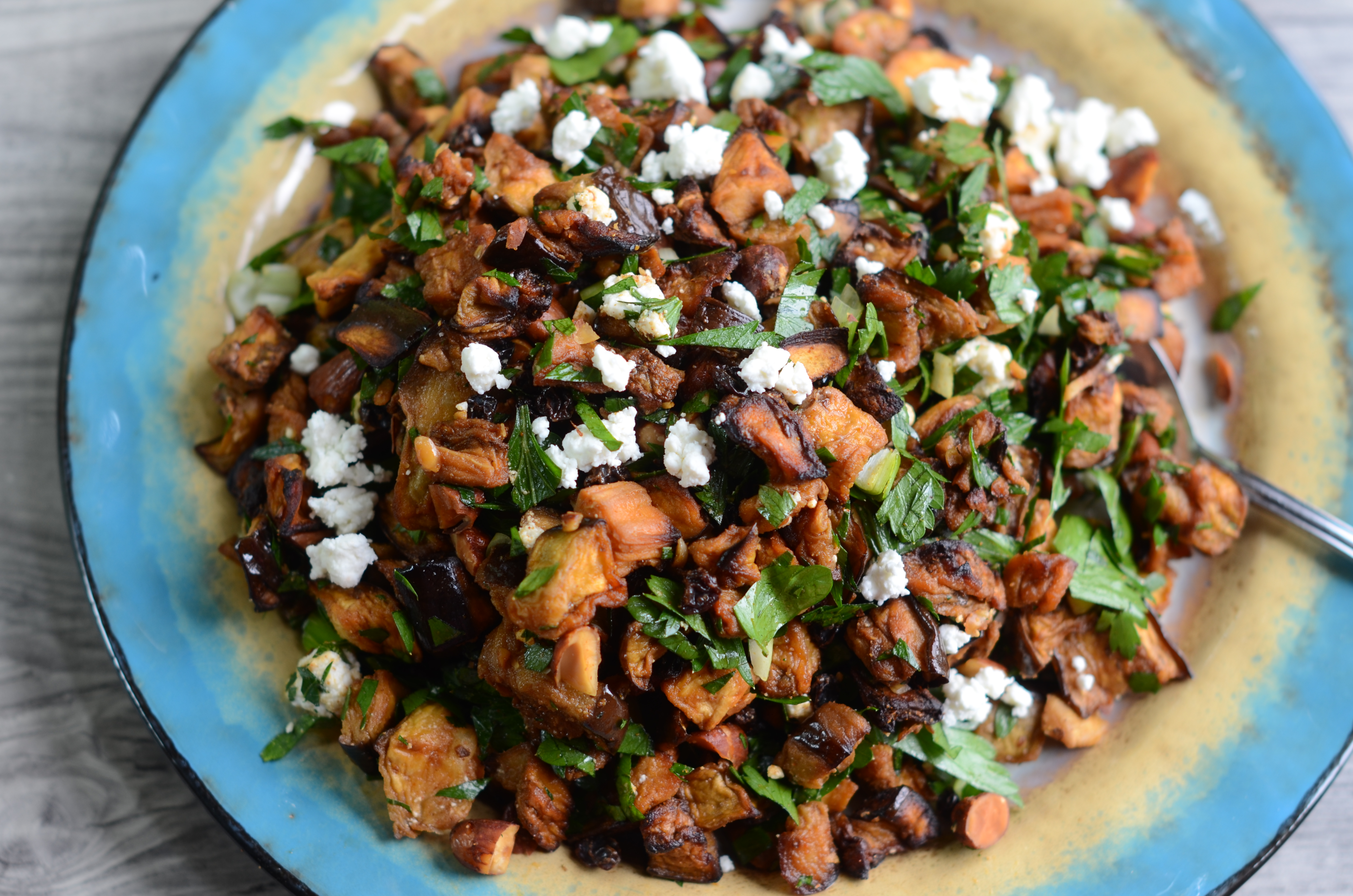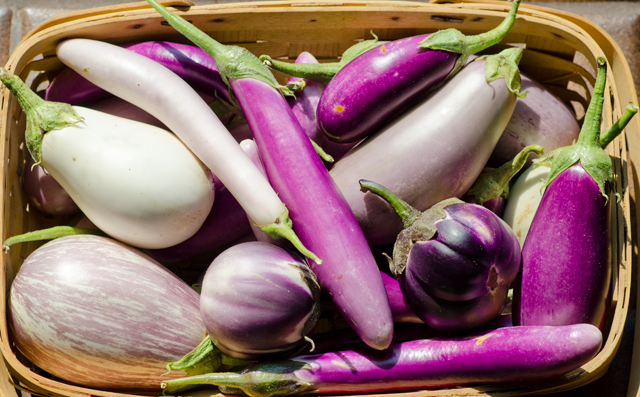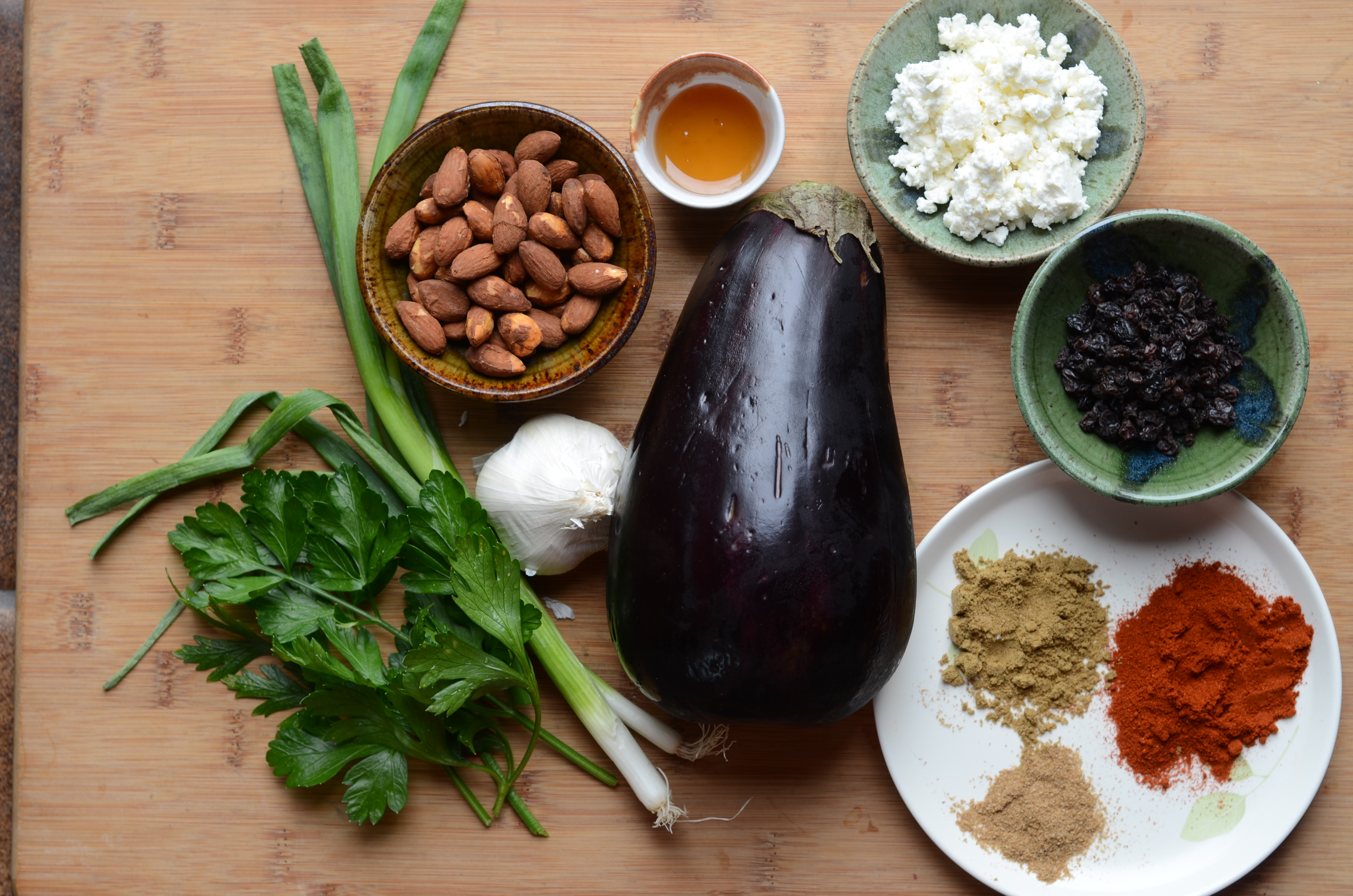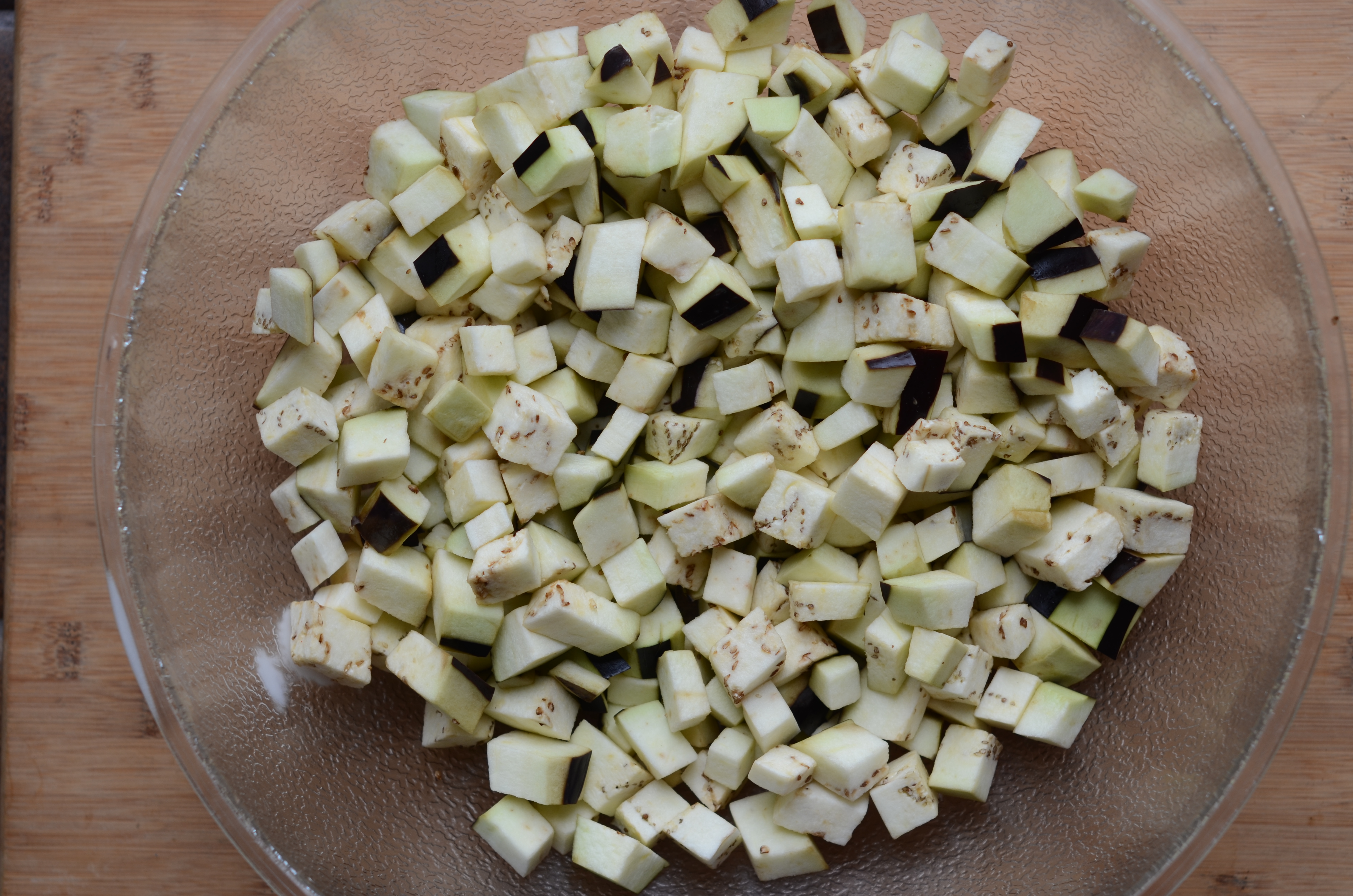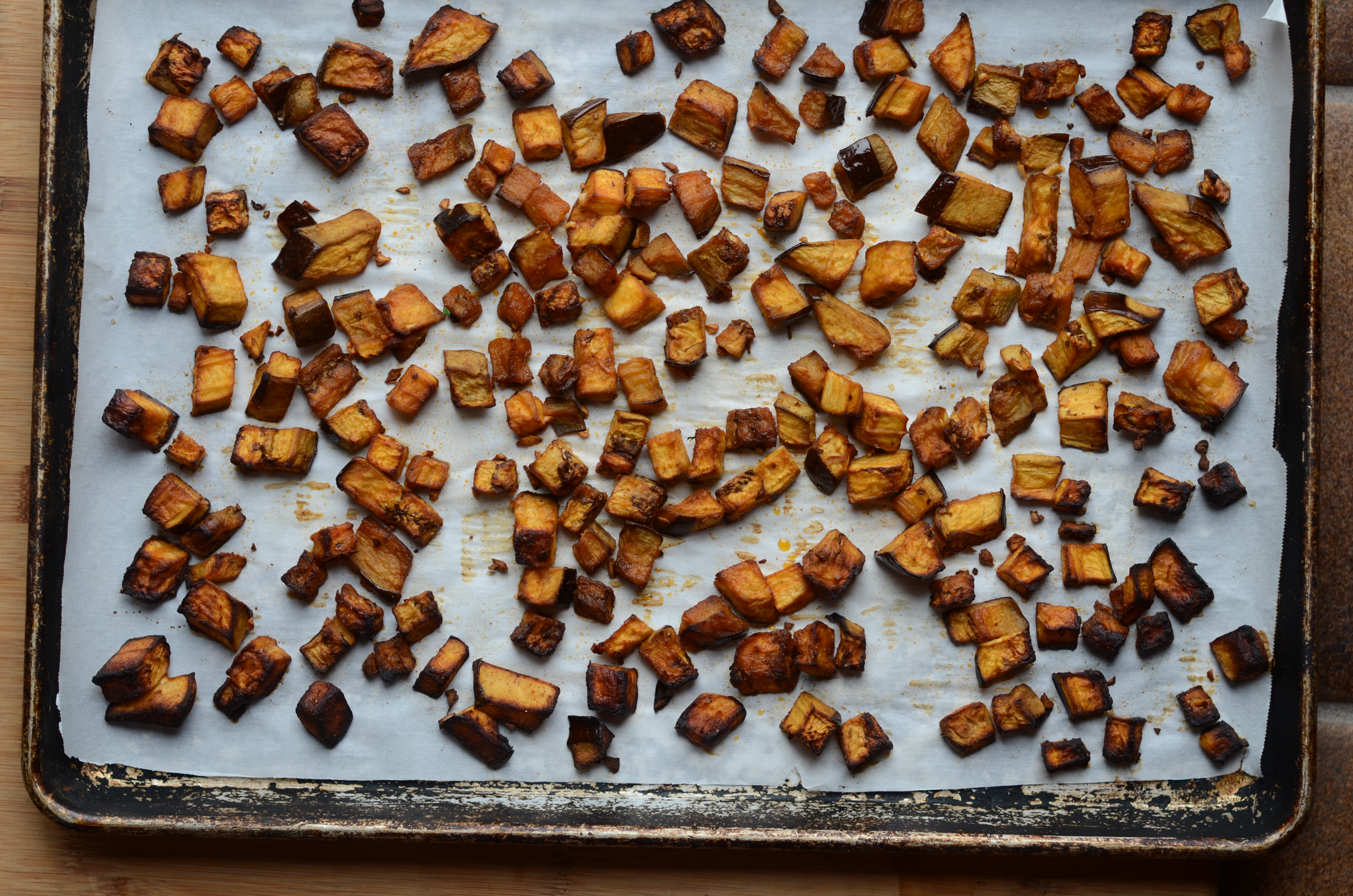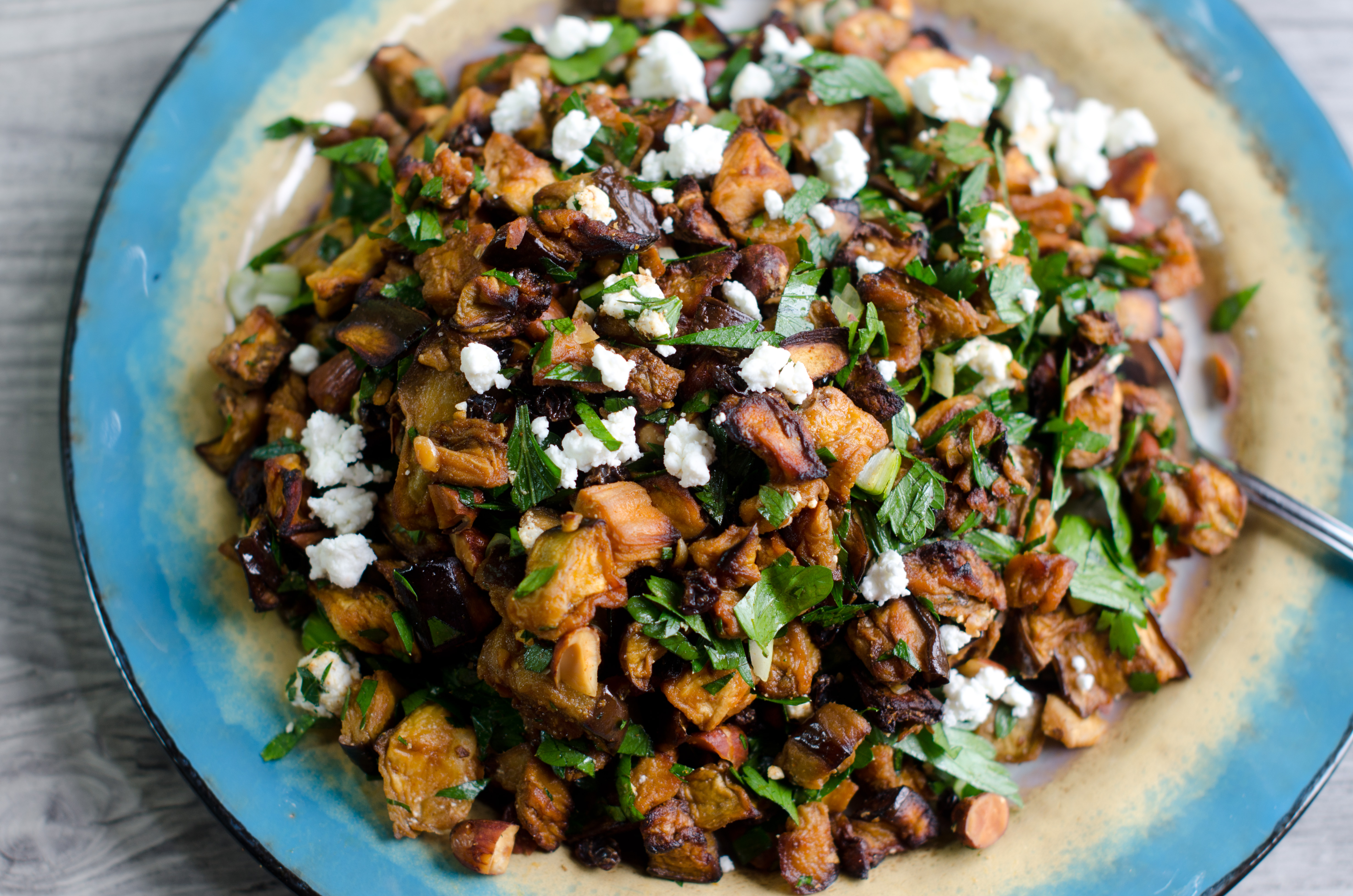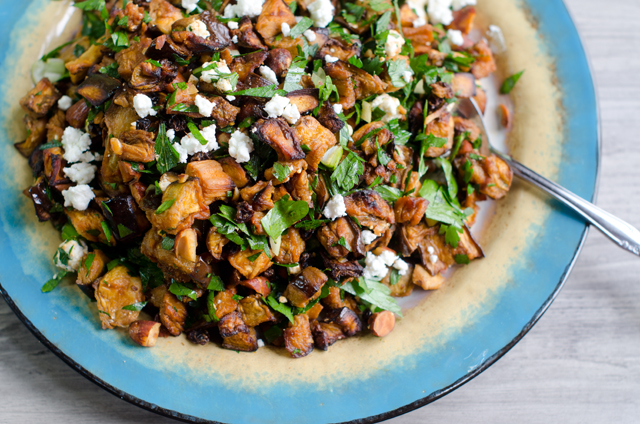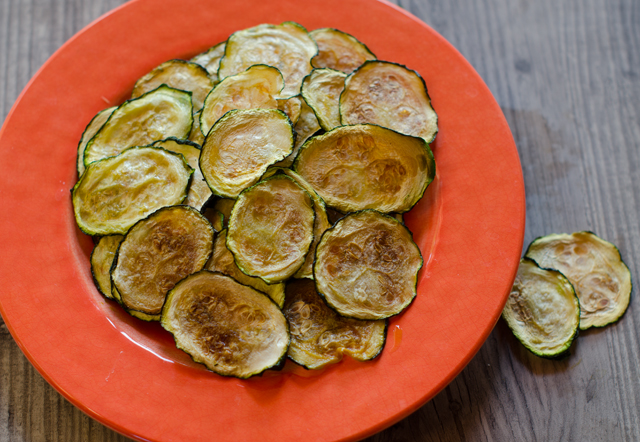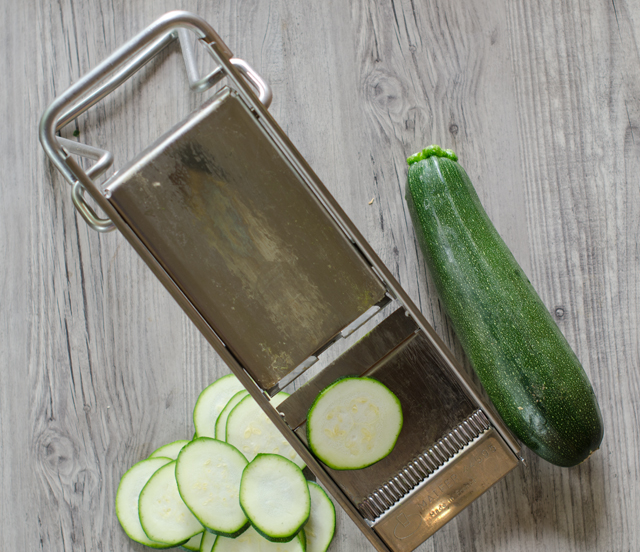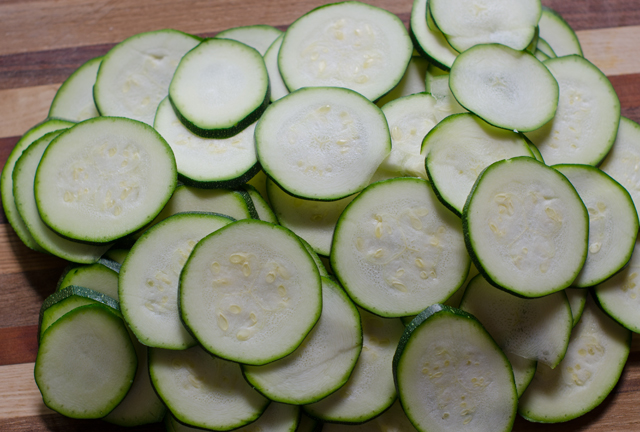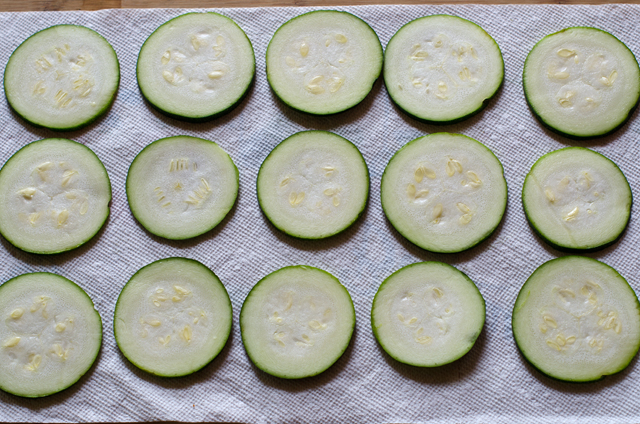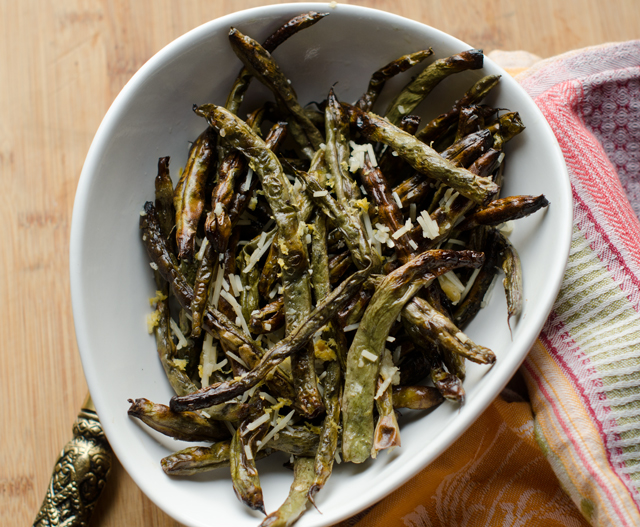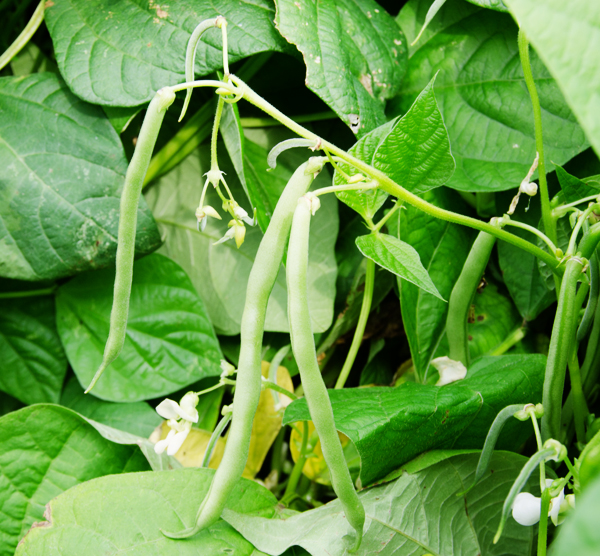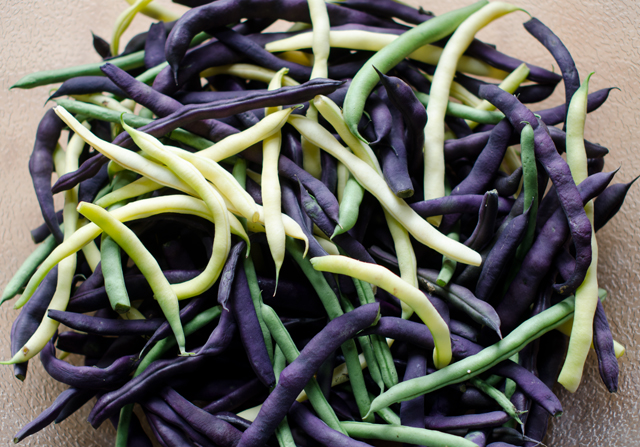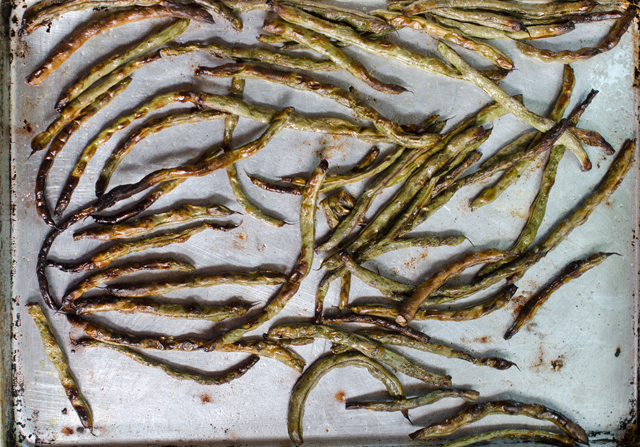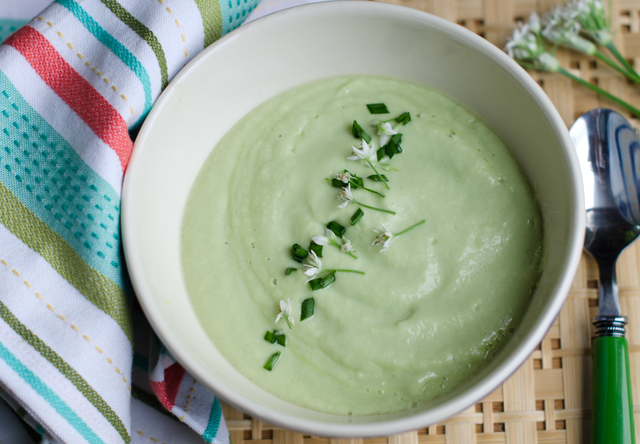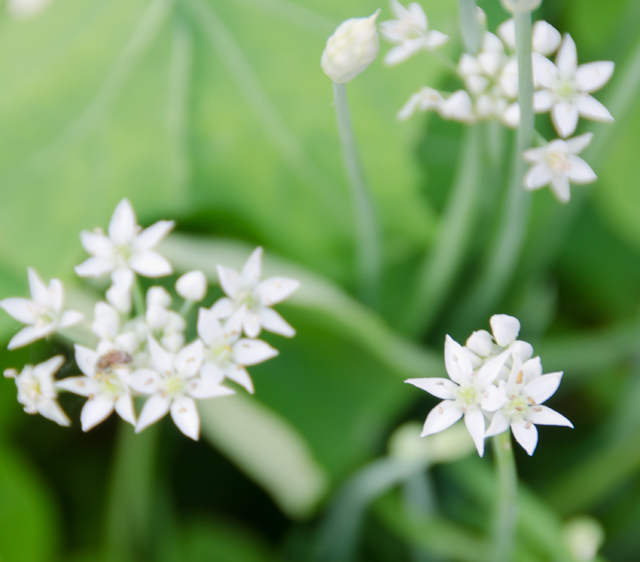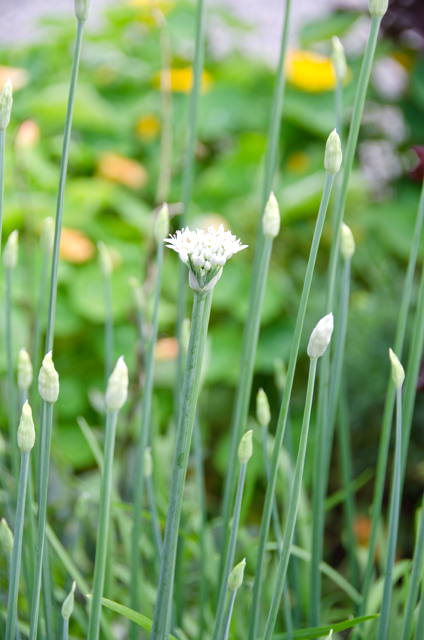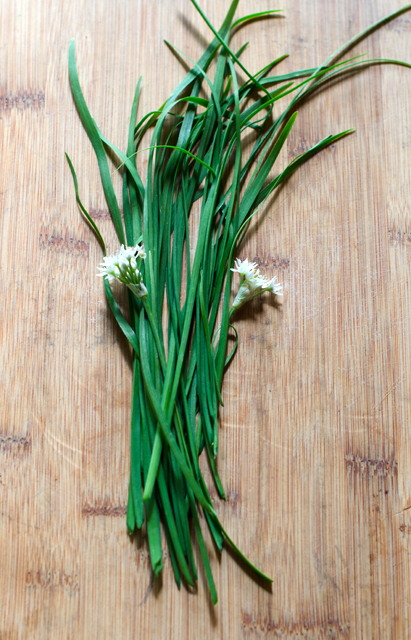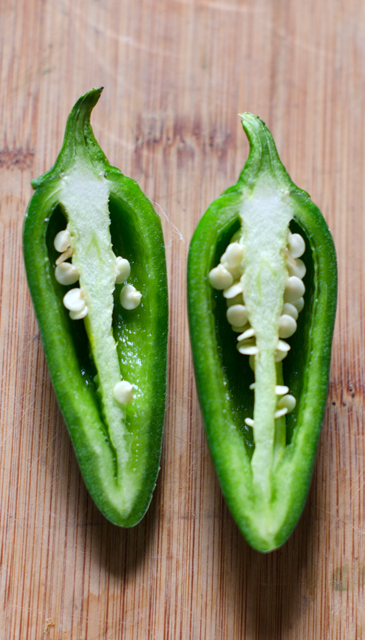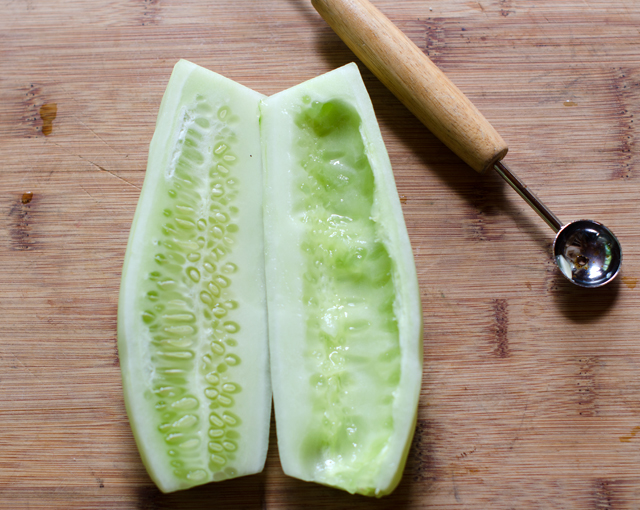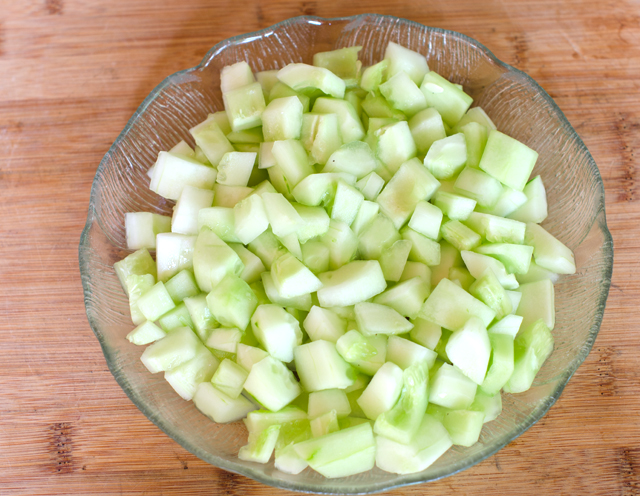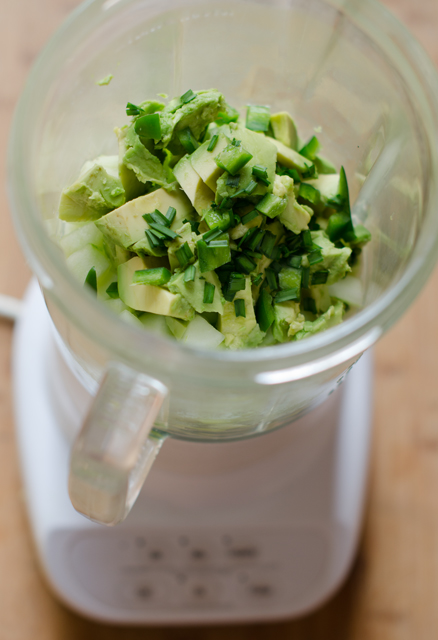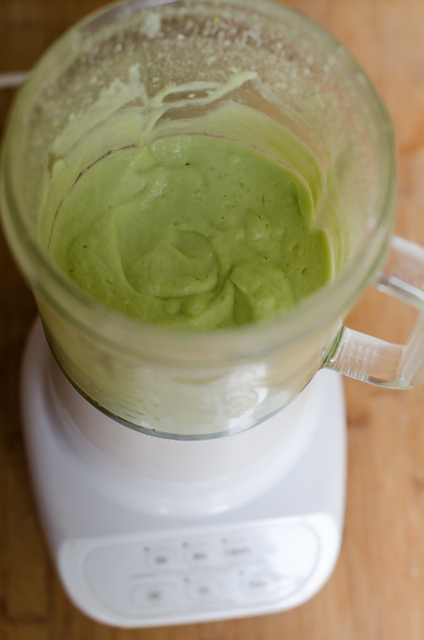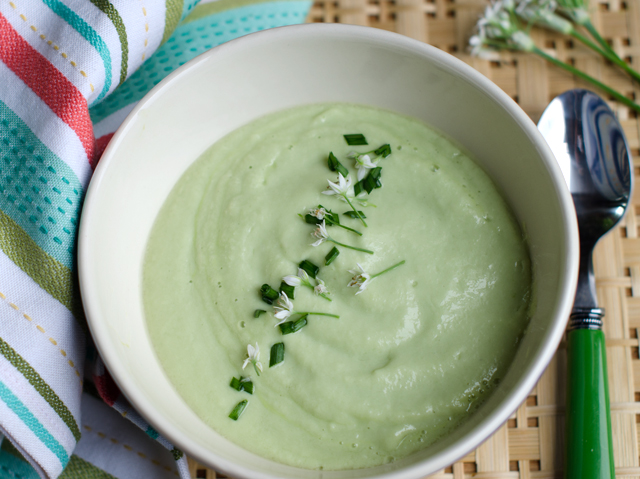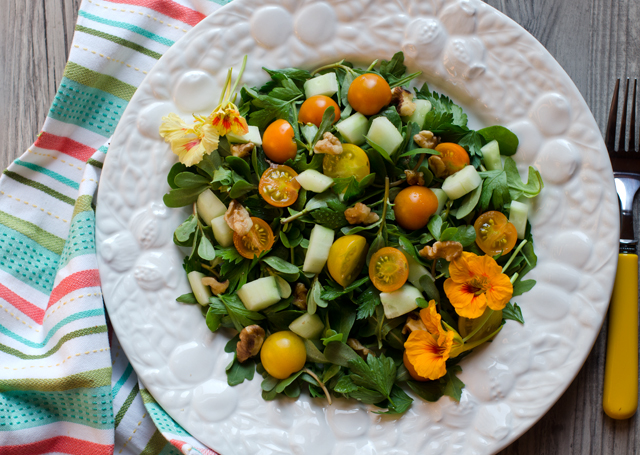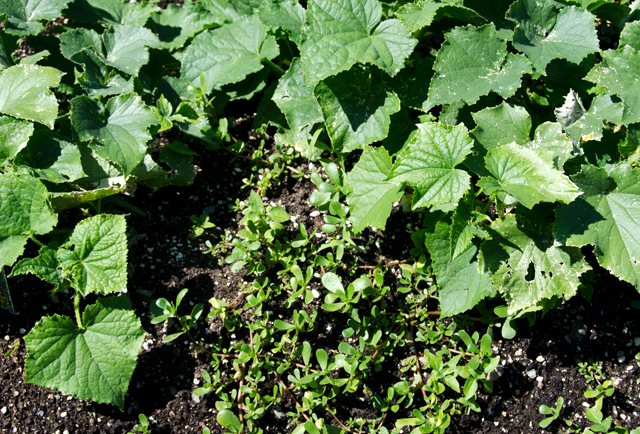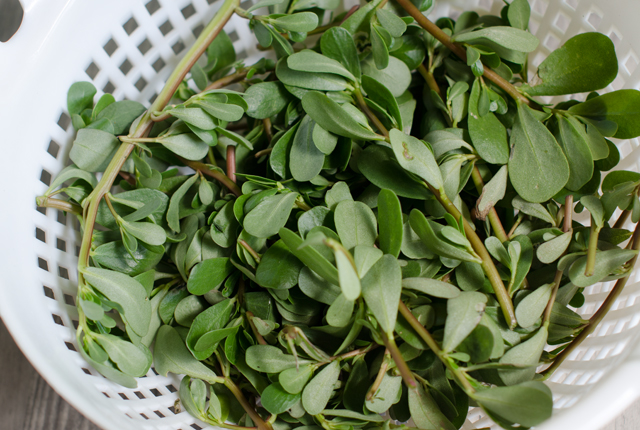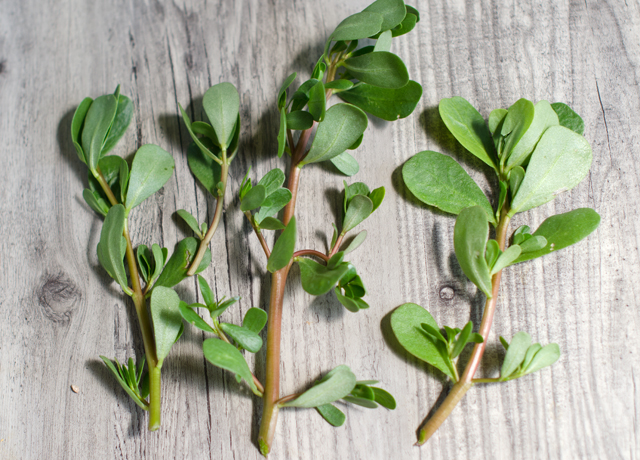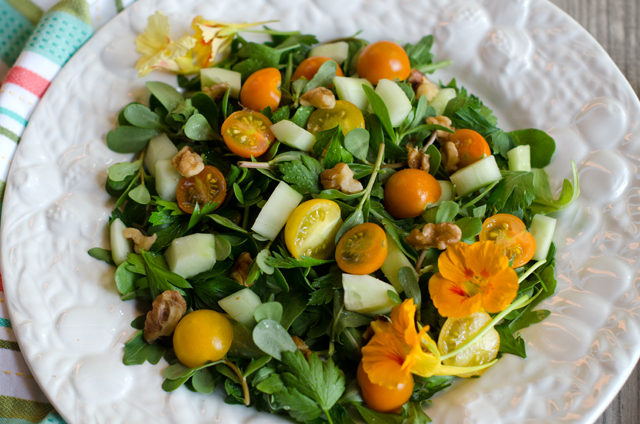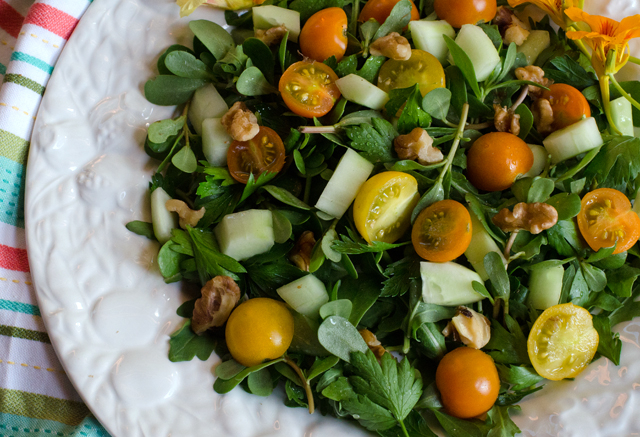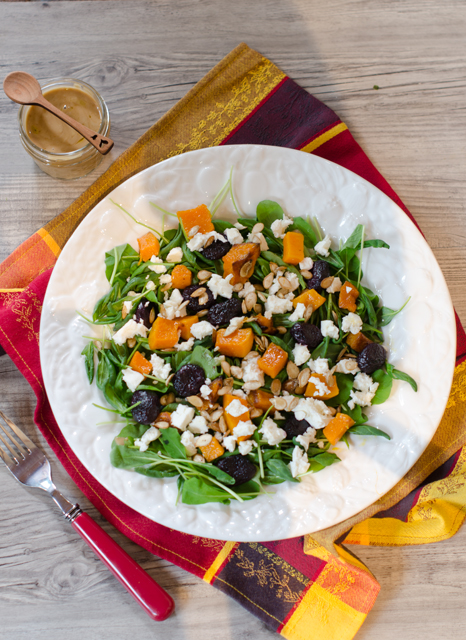
Fall is just flying by. Especially for me. I have spent the last few months off my feet recuperating from a fractured pelvis. I missed the last steps coming down from the bedroom while holding on to my coffee mug. Sad to say the mug didn’t fare well either. Now that I am back on my feet, it’s time to get back in the kitchen.
First on the agenda, a seasonal salad for Thanksgiving dinner. Most autumns we are enjoying green salads to the end of September, kale even later in the season. Too much rain this summer put an end to garden salads much too early.
Joe doesn’t like raw kale in salads so I chose a combination of spinach and arugula as the base to the salad. The next ingredient came from the garden, butternut squash. I peel the squash and cube it into 1 ½”inch pieces. Toss with olive oil, salt and pepper and place on a baking sheet. Roast for about 20 minutes, tossing the squash halfway through the cooking time and rotating the baking sheet. The amount of squash may seem like a lot but roasting condenses their size and concentrates their flavor.
Speaking of concentrated flavor, if you have never tried roasted grapes you will be in for a real treat. Like roasted vegetables, roasted grapes have a deeper richer flavor. Roasted grapes can be added to a cheese tray, salads or to chicken and pork dishes. Just rinse and pat dry, removing any damaged grapes. Toss grapes with a little olive oil, kosher salt and freshly ground pepper. Roast on a sheet pan at 425° F for about 30 minutes. Shake the pan halfway through to ensure even baking.
If you are going to roast butternut squash, why not save the seeds? Peel the squash, cut in half lengthwise and scoop out the seeds. I use a grapefruit spoon with its serrated edges to help the process along. I put all the seeds in a bowl of water, they aren’t as slippery and it’s easier to separate the seeds from the membrane. Drain the seeds in a colander, then lay out on paper towels cover with another towel. If you have the time, lay them out overnight to make them as dry as possible. Place seeds on a baking sheet and roast until they begin to pop and turn a light brown in color. Having a second larger baking sheet on the bottom shelf catches most of the ones that pop off the baking sheet. Alternately, use raw pumpkin seeds and follow the same procedure.
I dressed my salad with an easy to make maple balsamic dressing. A sprinkling of cheese is always nice, feta or blue works well here. For Thanksgiving I used cubed cheddar for something a little different. Different components of the salad, roasted grapes,the dressing, butternut squash cubes and roasted seeds can be made several days in advance. Add grilled chicken or shrimp for a nice lunch or light supper.
Roasted Grape and Butternut Squash Salad with Maple Balsamic Dressing
Serves four
Ingredients for the roasted grapes
- 3-4 cups of either red or black seedless grapes
- Extra virgin olive oil
- Kosher salt
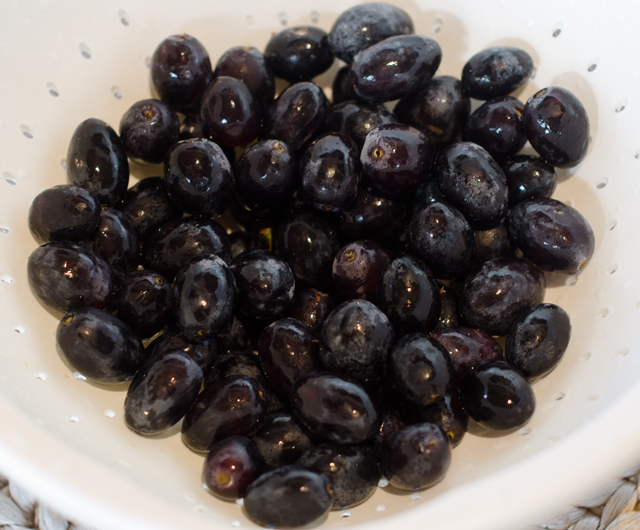
Directions for the roasted grapes
- Preheat oven to 425°. Destem the grapes, wash and pat dry.
- Place the grapes in a bowl. sprinkle lightly with olive oil and kosher salt.
- Transfer grapes to a baking sheet and roast for 30 minutes. Shake pan and move front to back halfway through the baking process. Store in an airtight container if not using right away.
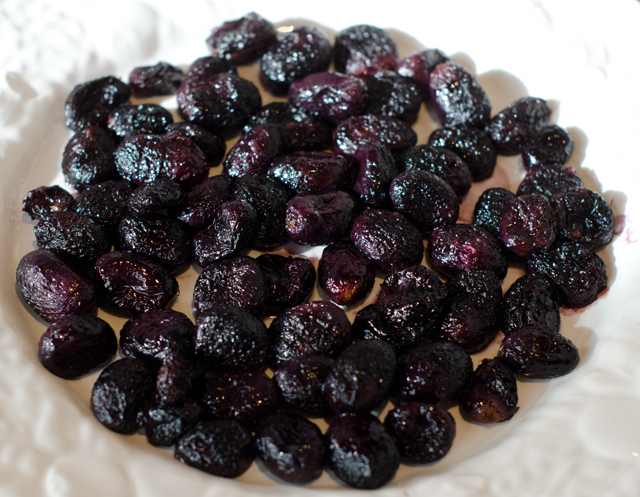
Ingredients for roasted squash
- 1 medium butternut squash 3-4 lb
- Olive oil
- Kosher salt
- Fresh ground pepper
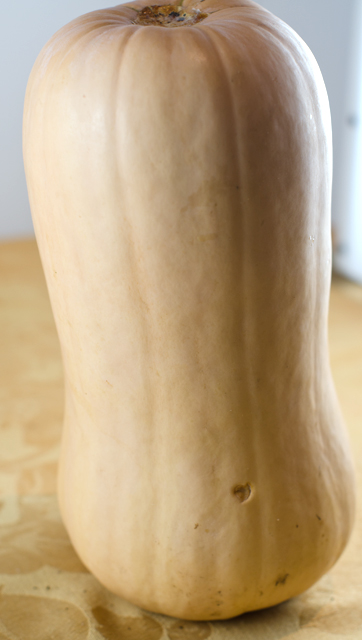
Directions for roasted squash
- Peel, halve and seed the squash, cut it into 1 inch cubes. In a large bowl toss the squash with olive oil and season with salt and pepper. Place evenly on the prepared baking sheet. Roast until golden brown, about 20 minutes, at the halfway point carefully move the cubes around on the sheet to ensure even browning. Set cubes aside to cool. You will have enough for several days worth of salads.
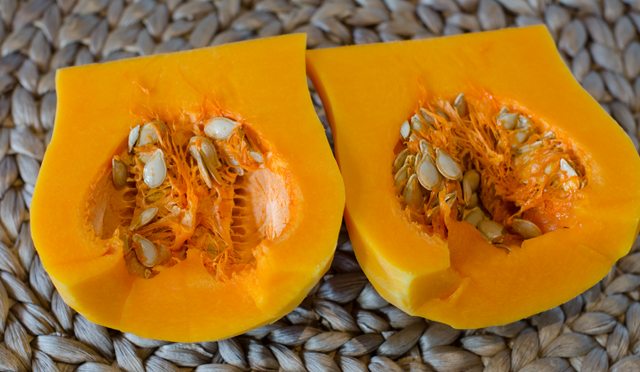
Ingredients for toasted squash seeds
- Peeled and halved butternut squash from the previous step.
Directions for roasted squash seeds
- Preheat oven to 350°F.
- Use a spoon ( a grapefruit spoon works well) to remove the seeds and pulp. Use your fingers to separate the seeds from the pulp. Put the seeds in a small bowl of water. I find this makes it easier to separate any stubborn pulp from the seeds. Transfer the seeds to a colander and rinse.
- Put squash seeds on a layer of paper towels and pat them as dry as possible.
- Toss seeds with a little olive oil, salt and pepper. Place seeds on a dry baking sheet in a single layer.
- Roast for about 15-20 minutes, stirring a few times, . Keep a close eye on them as they can burn easily.
- Cool before using, 5 to 10 minutes, the seeds will become crisper as they cool.
- Store in an airtight container.
Ingredients for Maple Balsamic Dressing
- 1 T pure maple syrup
- ½ c mayonnaise or Greek yogurt
- ¼ c balsamic vinegar (I used pomegranate balsamic)
- ½ t fresh lemon juice
- Kosher salt
- Freshly ground pepper
Directions for Maple Balsamic Dressing
- Combine all ingredients in a small bowl . Whisk until smooth.
Ingredients for Salad Assembly
- Baby spinach and arugula
- Roasted grapes
- Roasted butternut squash
- Roasted squash seeds
- Crumbled feta
- Maple balsamic dressing
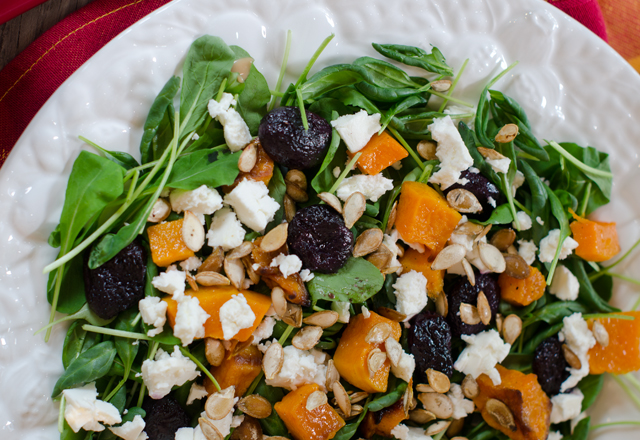
Directions for Salad Assembly
- Place greens in a large salad bowl, toss lightly with dressing. Add grapes, butternut squash seeds and feta, toss again. Using tongs, transfer salad to individual salad plates. Pass freshly ground pepper and additional dressing.
